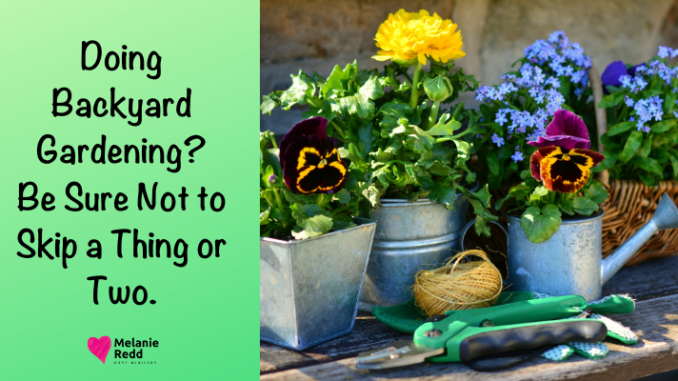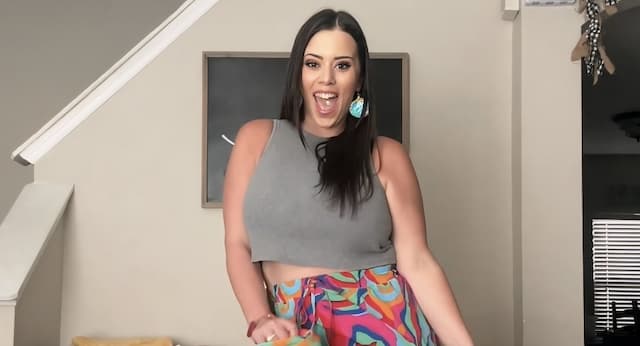Doing Backyard Gardening? Be Sure Not to Skip a Thing or Two.

Backyard Gardening.
Creating a healthy backyard garden requires a bit of planning and preparation.
Indeed, there are some important elements to consider.
These include the environment, the types of plants you want to grow, the types of maintenance, and pest-eliminating factors.
Without any ado, let’s dissect each of these individual elements:
First, in backyard gardening, determine the healthiness of your backyard soil.
Before you start taking any action, you should first determine if the soil in your background is adequately healthy to support the growth of plants.
High amounts of nutrients are needed, and the best way to know this is by observing underground insect activity; earthworms tend to dwell beneath the soil that can offer them a sufficient quantity of nutrients, for example.
Even if the soil’s quality is below average, there are several ways to improve it.
The first and arguably the easiest method to do so is by adding organic compost.
Mulching its surface and adding animal manure to fertilize it are also highly efficient methods.
Next, in backyard gardening, consider the size of your garden.
One of the first steps to designing a backyard garden is measuring how much space it will occupy.
It’s usually better to plan ahead and leave more room than you think it needs.
Also, this will allow you to upgrade your garden with additional plants in the future.
Observe the sunny and shaded spots carefully. Some plants need more sunlight while other types need a bare minimum (with the risk of dying if exposed to too much heat).
Take the typical passageways of your backyard into consideration.
Also, you should allow any visitors and family members to pass by your garden instead of walking through it.
Third, in backyard gardening, consider overall the overall environment.
Sub-factors such as temperature and humidity play important roles in the development of any garden.
Only a small portion of plants can survive extreme environments, but hopefully, there are ways to bring balance to your garden with relatively inexpensive and simple tools.
Humidity
Humid conditions are generally detrimental to the growth of all plants, as mold is more likely to grow, which eats away at plants and crops. Most garden pests thrive in humid conditions, especially ground insects.
The best way to grow healthy plants in humid environments is to keep the soil dryer than usual, to never over-water your plants, and to go with humid-friendly plants, such as eggplants, pole beans, watermelons, or cucumbers.
Low humidity is a bit easier to tackle. Watering the plants more frequently and keeping the soil adequately wet almost always does the trick.
Fourth, in backyard gardening, choose your plants.
In essence, you can grow almost any kind of plant in your backyard if you don’t mind putting in the effort to increase their resistance to heat, cold, humidity, pests, and diseases.
For example, parsley, lettuce, and most Asian greens are fairly resistant to diseases, but they should be kept in shade for the most part of the day (require at most four hours of sunlight a day). Beets, carrots, potatoes, broccoli, and turnips are much easier to grow in almost any climate and environment.
While resistant to colder temperatures, peppers, tomatoes and strawberries still need a lot of sunlight time (between six and eight hours a day).
The shortcomings of any plant can be mitigated by growing beneficial ‘companion’ plants that would support their growth.
Were you encouraged by what you read?
Then, would you share this article with a friend, co-worker, or family member?
Or, maybe you can send it to a friend or family member?
This blog occasionally uses affiliate links and may contain affiliate links. Additionally, Melanie Redd is a participant in the Amazon Services LLC Associates Program. This is an affiliate advertising program designed to provide a means for sites to earn advertising fees. These are earned by advertising and linking to amazon.com. Also, for more on my disclosure policy, click HERE.
© Melanie Redd and Hope Ministry, 2022. Unauthorized use and/or duplication of this material without express and written permission from this blog’s author and/or owner is strictly prohibited. Further, excerpts and links may be used, provided that full and clear credit is given to Melanie Redd and Hope Ministry, LLC. Please give appropriate and specific directions to the original content.



